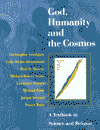The EPR ParadoxWhile Einstein had played a crucial role in the early development of quantum mechanics (see the photo-electric effect), he was very uneasy about its implications and, in later years, organised a rearguard action against it. His aphorism ‘God does not play dice’ highlights the depths of his distaste for quantum uncertainty. His strongest counter-argument was to call attention to a paradoxical implication of quantum mechanics now known as the Einstein-Podolsky-Rosen (EPR) Paradox. Take, for example, a pair of protons whose quantum spins cancel out. Now separate them and measure the spin of one proton. Because they were paired, they had a combined wave equation (see The Schrödinger Wave Equation). Measuring the spin of one proton ‘collapses’ that wave equation and determines the spin of the other. It appears that a measurement in one place can have an instantaneous effect on something that may be light years away. For Einstein this was proof that quantum mechanics must be incomplete. To him this result only made sense if the spins were determinate (but unknown to us) before the protons were separated. In this case, measurement would merely tell what was always the case. But, according to the orthodox interpretation of quantum mechanics, it is not merely a matter of ignorance. The spin is not determined until it has been measured. In other words, the pair of protons cannot be regarded as separate entities until the measurement has been made. Some years later, a quantum logician turned this paradox into a testable prediction that now bears his name - Bell’s inequality. This is an equation which should be true if two principles (assumed by Einstein and his colleagues in formulating the EPR Paradox) hold in the world:
Taken together, these principles imply an upper limit to the degree of co-operation that is possible between isolated systems. In 1982 a team of physicists at the University of Paris led by Alain Aspect demonstrated experimentally that this limit is exceeded in nature. In other words, our physical descriptions of the world in which we live cannot be both real and local in the above sense. Most physicists interpret this result as we did above, abandoning the reality principle - the property (spin in this case) has no definite value until the measurement is made. (An important exception is the hidden variables theory of David Bohm.) What the usual interpretation of the EPR Effect means in practice is a greater emphasis on describing quantum-mechanical systems as a whole. This runs counter to the tendency of classical physics towards ‘bottom-up thinking’- treating systems as collections of separate entities, and trying to reduce their properties to the individual properties of the simplest possible components. The quantum world, which deals with the simplest entities we know, seems to resist this reduction - it is in Karl Popper’s famous phrase ‘a world of clouds’ as well as ‘clocks’. ‘Bottom-up’ thinking has served science extremely well, but even in the most basic of systems in physics it has its limitations.
Email
link | Feedback | Contributed by: Dr.
Christopher Southgate |





